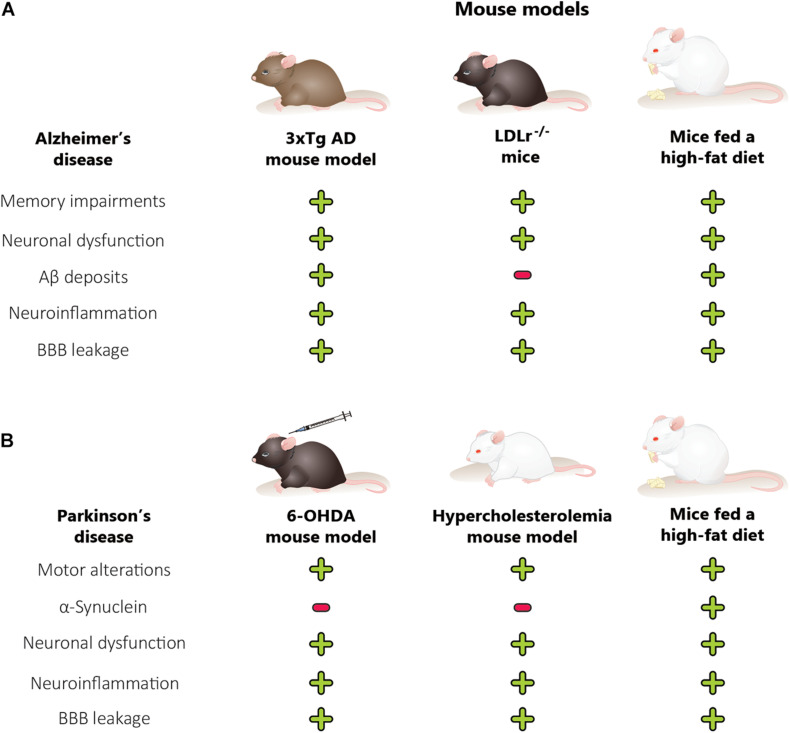FIGURE 4.
Comparison between animal models of metabolic disorders, Alzheimer’s disease mouse model and Parkinson’s disease mouse model. The features of Alzheimer’s disease (A), including memory alterations, are also observed in hypercholesterolemic and obese rodents. The cognitive decline in obese and diet-induced hypercholesterolemic mice is associated with changes in Aβ levels, neuroinflammation, BBB dysfunction, and neuronal dysfunction, in the brain regions affected in Alzheimer’s disease. On the other hand, the genetic models of hypercholesterolemia also presented memory alterations, which are related to neurodegeneration, brain inflammation, BBB disruption, and neuronal dysfunction, but not modification in the Aβ deposits. Parkinson’s disease (B) features, including motor alterations, are also observed in hypercholesterolemic and obese rodents. Moreover, the hypercholesterolemic and 6-OHDA mouse model did not present an increase in α-synuclein mRNA expression while mice fed a high-fat diet presented. The motor alterations in obese, diet-induced hypercholesterolemic and 6-OHDA mice are associated with neuroinflammation, BBB dysfunction, and neuronal dysfunction in the brain regions affected by Parkinson’s disease. 6-OHDA, 6-hydroxydopamine; AD, Alzheimer disease; Aβ, amyloid-β peptide; BBB, blood-brain barrier; LDLr–/–, low-density lipoprotein receptor knockout mice. (+) There is alteration, (–) there is no alteration.

